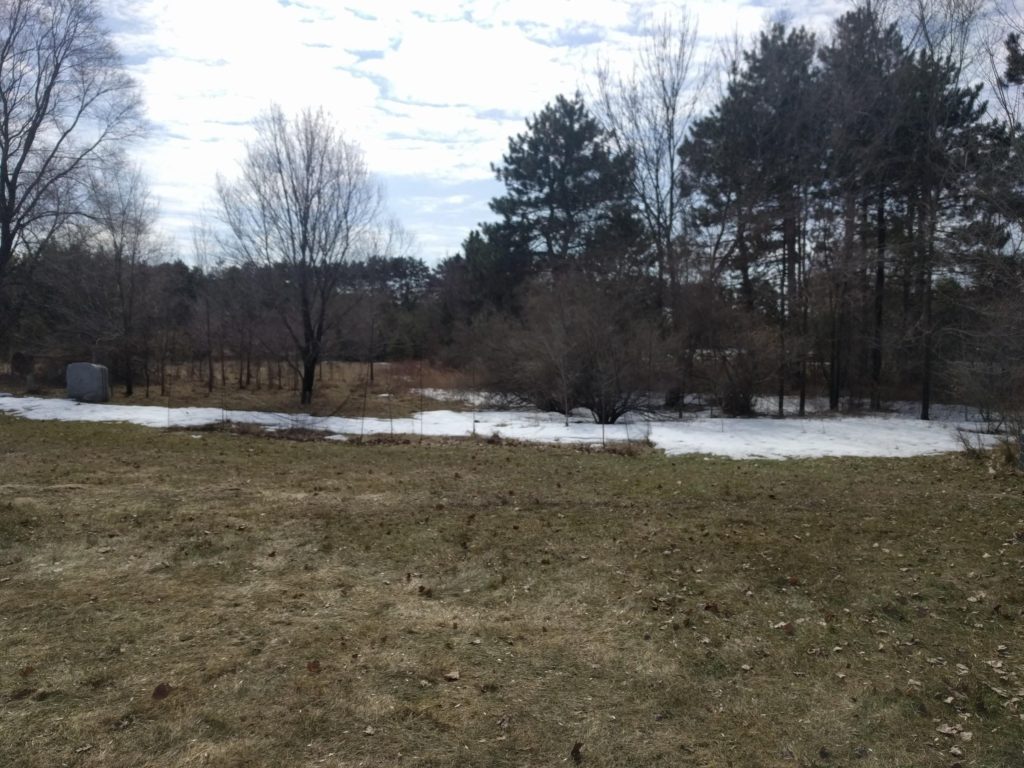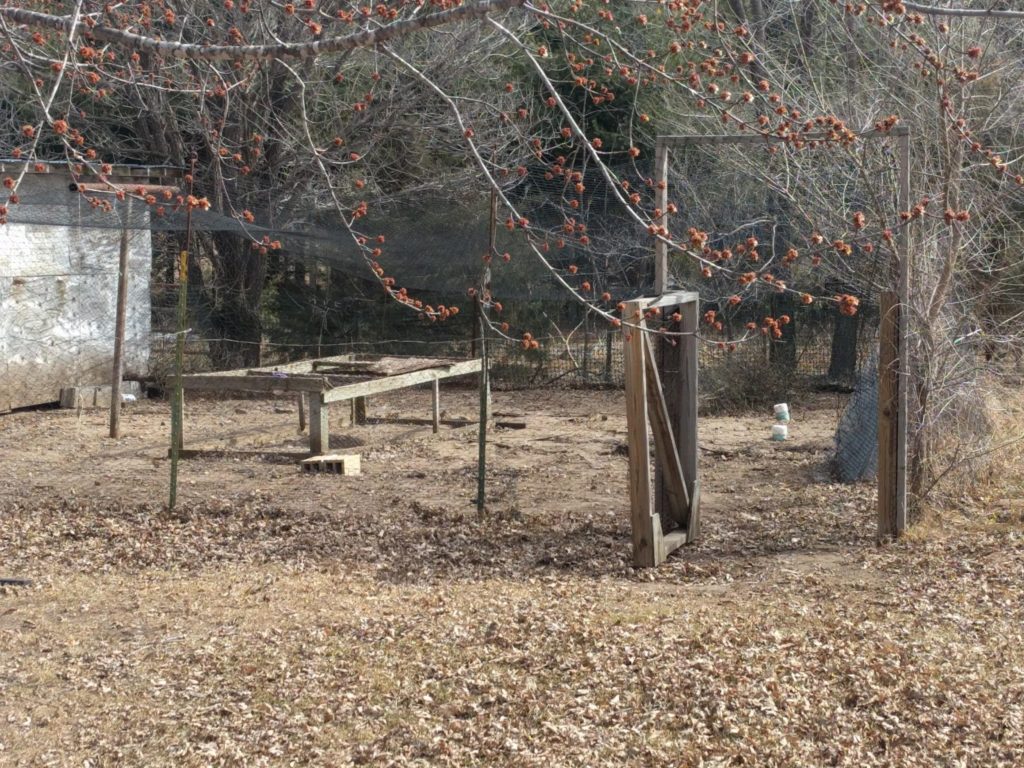New blogger Katherine Kretchmar comes to us from Minnesota.
Happy spring! In my part of Minnesota that doesn’t mean green things yet, but it does mean that the snow is mostly gone (for now, though April can always bring more) and my chickens are venturing out of the coop.
Variety of Chickens
We have a variety of chickens. Our current count is 13, but that number has gone up and down over the years, never more than three of the same variety and never more than 19 because that would mean getting approval from the city. My kids and I started with our first batch of pullets in 2012.

This is the side yard. Some snow, mostly brown grass.
My very first chickens had no problem with snow, but since then I have had chickens that won’t have anything to do with that white stuff on the ground. But now that we have the dead brown showing, they are willing to venture out.

“Mom’s in the yard. Think she’ll come here? If we squawk loud enough she might give us attention!”

“Mom’s coming, get out of my way! I have to be first! I’m stepping on you to get there faster!” A buff Orpington and a Rhode Island Red are the pushiest, front and center.
The Run
We have a fenced run for the chickens, which keeps them safe when we aren’t home. It’s made of simple T-posts stuck deep in the ground every couple of yards and wrapped with poultry netting. We used 2-by-4s for the gate and the whole enclosure is somewhere in the ballpark of 40 by 50 feet. I never actually measured it. We put the run behind a building that the previous owners thought had been a horse stable. We used part of that building for a coop and the rest for storage. While this worked for placement of the run, it put my clothes line IN the coop. I eventually got a new laundry line.
Blissfully Optimistic
With our first batch of 8 chickens, we were blissfully optimistic and thought a 4-foot tall fence around the run would be sufficient. Our chickens laughed and flew right over. One Rhode Island Red, Speckles, had an especially large personality. She thought it was fun to fly over and come to us so that we would put her back. She would do this over and over. The others would just get out and stay out.
After a summer and early fall of chasing chickens, we decided that we needed a roof on our run. I looked at a lot of options online, and found one that was designed for poultry to keep out predators and was sturdy enough to not break in snow. If it will keep eagles out, it would also keep chickens in, right? It was not inexpensive, but we have never regretted having a lid to our run.
We put up longer posts, rigged out of what we had lying around, mostly ½ inch metal bar stock because my husband is a blacksmith. That was probably more entertaining to watch than to do, but we got it done. Those laundry T-bars were very helpful for holding it up in the middle, too: a very convenient accident. We zip-tied the net to the walls and tightened it up with springs, mostly because the metal rods we used bend in the heavy snow.

This is our chicken run. That’s an old small run in the middle that the chickens like to climb on and get shade under.
Birds in the Yard
When we are home, I let the birds into the yard as much as possible. That does several things for me and for the chickens. It keeps them from killing quite all of the plants in the run, which is mostly a lost cause, but I try. The chickens get to eat bugs and any green things they spy, which they find delectable. I especially like that they eat ticks. We have way too many ticks in this part of the world. In theory they also aerate and fertilize the yard, but what they really do is dig holes where they want to dust bathe and move my mulch off of the flower beds.
Our chickens are just plain fun to watch wander around the yard. I always give them treats when I let them out: either scratch or sunflower seeds. (They might be spoiled.)

“Mom gave us treats. I must get them all.”

“I’m the loner and I must be somewhere else entirely. “
I don’t know why my buff leghorn is always away from the group, but she’s very consistent. Being a loner is more important than treats.
Katherine Kretchmar lives in Minnesota on the cusp between urban and rural on the north side of Minneapolis and St. Paul on 4 acres of sand. She is passionate about chickens, plants, Girl Scouts and how things were made in the Viking Age. Katherine has two almost adult kids, a husband who is a teacher and blacksmith, and she works a variety of part time jobs.












